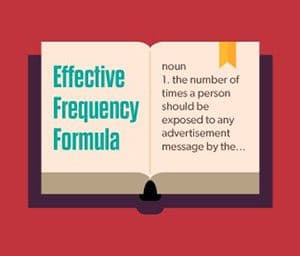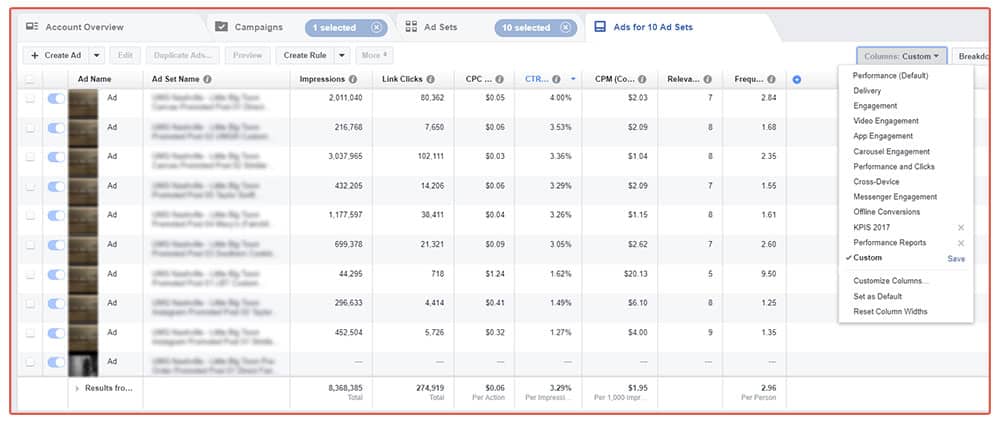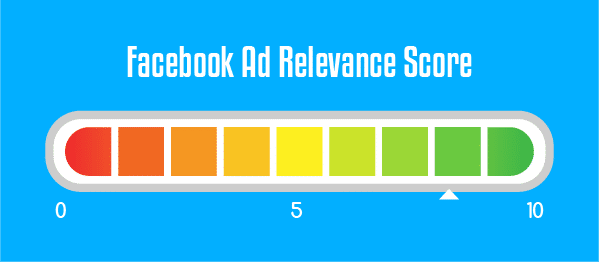1. Frequency:
 You need to make a definite decision about how many times your target customer will end up seeing your digital advertisement. This is your effective frequency formula. If your ad chases your target around the internet like an annoying fly, you are going to end up doing serious damage to your brand. Customers experience fatigue if the same advert keeps retargeting them on a seemingly endless Groundhog day cycle. Then some marketers are surprised when the campaign does not deliver optimal results. The opposite scenario of only displaying an ad once to a consumer is also not going to provide the engagement you seek. Finding the balance between overwhelm and invisible, is the fine tuning you need to set the perfect frequency for your customers.
You need to make a definite decision about how many times your target customer will end up seeing your digital advertisement. This is your effective frequency formula. If your ad chases your target around the internet like an annoying fly, you are going to end up doing serious damage to your brand. Customers experience fatigue if the same advert keeps retargeting them on a seemingly endless Groundhog day cycle. Then some marketers are surprised when the campaign does not deliver optimal results. The opposite scenario of only displaying an ad once to a consumer is also not going to provide the engagement you seek. Finding the balance between overwhelm and invisible, is the fine tuning you need to set the perfect frequency for your customers.
The easiest way to ensure that a customer doesn’t get bombarded with your latest offering is to use a frequency capper. This function allows you to set the number of impressions per user for your ad. Before you roll out your campaign, you must decide the number of impressions you want that will yield the highest results before the ad performance dramatically declines. To ensure there is no frequency fatigue with your prospects, consider using a rotation of ads that each offer a different appeal. You can change the design or copy to deliver a seemingly “new” experience for the target.
The art of executing successful digital advertising campaigns seems to require a Ph.D these days. There are so many elements to consider when determining your strategy and execution, it can feel like you are jumping digital hoops in a desperate bid to make it to the finish line before your competitors. The type of ad, its creative content, visual image selection, audience targeting, the marketing channel, composition of the landing etc. are factors that take up a large percentage of the planning. But there are five key areas that must not be neglected if you wish to see impressive conversion rates.
We are talking about the top 5 metrics that need your attention:
- Frequency / Reach
- CPC: Cost-Per-Click
- CTR: Click Through Rate
- CPM: Cost-Per-Mille (Thousand)
- Relevance/Quality Score
These are the “scientific” markers of a perfect digital advert equation. Let’s unpack the jargon.
2. Cost-Per-Click
CPC is basically the process where every time someone clicks on your ad link – you pay. The online ad platforms need you to fill in your target CPC for your chosen campaign. This prompts the question of how much you are able/willing to spend on a new CPC ad campaign. Yes, you guessed it –there isn’t a short answer. That would be too easy. You have to arrive at this figure by looking at all of the factors impacting your initiative like the platform you have chosen for your ad, the type of advertising selected for your specific product, the target audience, as well as your bidding strategy. Ultimately there has to be a substantial return on investment to consider your CPC metrics. This is usually in the ballpark ratio of around 5:1 revenue-to-ad. Spend one dollar make five.
Obviously with a bigger budget you can compete stronger on the ad platform auction to ensure you get placed higher on the results page. A standard way to calculate your target CPC is to employ this formula: (revenue generated per sale x your website conversion rate) x 20%. For B2B websites your formula is slightly different based on the more complex buyer’s journey. This B2B CPC formula can be worked out in the following way: (revenue generated per sale x lead generation rate x internal close rate) x 20%
3. CTR: Click Through Rate
This metric is used to measure the number of clicks an ad receives in relation to the number of impressions. You want to aim for a high CTR because it determines how much you will end up paying for every click on a PPC ad. Your CTR also impacts your quality score (more about that later). If you achieve a high click-through rate Google AdWords (and other search platforms) will offer you a pricing discount as a reward.
How do you determine what constitutes an excellent CTR? This will depend on your chosen keywords, ad copy, SERP’s ranking and specificity of your campaign. For AdWords, the average click-through rate is around 1.91% for search and for display, 0.35%. But a really good CTR is around 4-5% (search) and 0.5 -1% (display) respectively. What is the most important aspect to CTR is that you want to be achieving a high rate for the right reasons. You don’t want to be using a keyword that isn’t relevant to your business. You might get the click but you won’t generate a lead from a misleading keyword choice. You are paying for that click so make it count with relevancy every time. The option to create negative keywords prevents irrelevant searches. If the keyword you select is priced really high, you might not be able to make a profit because you will be paying a lot for the torrent of clicks it attracts. Targeting keywords that accurately match your offer and that are not expensive will lead to an improved ROI.
4. CPM: Cost-Per-Mille (Thousand)
We are talking about the cost on 1,000 impressions and it is a preferred method of billing by publishers. You are not paying for how well the ad performs as it is an inventory based option. For this reason, it is the preferred priced media method. Publishers sell CPM first before entertaining CPC offers. CPM costs are based on what the publisher is charging and if you see $2 CPM you know that you will have to outlay two dollars for every 1000 impressions of your ad. The $2 cost is a fairly standard metric for CPM. If your marketing focus is on generating an increase in brand awareness, CPM will be the most effective way to do it. The click-through rate will be less important as you are promoting a message not looking for a specific conversion. This is an option for you if you have high traffic volume on your website.
5. Quality Score

Google will give you a great discounted CPC rate if your ad exemplifies quality and relevance for the user. Quality score is determined by multiple factors like your CTR, keyword relevance to your ad group, landing page quality, relevance of your ad copy, as well as your past account performance on AdWords. Google has a Quality Score algorithm that decides the weighting of each factor but your CTR is one of the key metrics that it looks at when determining your score. The higher the score the less you pay and the greater your campaign success. Your ROI will be higher thanks to the lower costs. Basically it is proof that your chosen ad is matching the needs of your target consumer.
If you want to boost your quality score you must constantly work on your ad to make sure it is performing optimally. Do more keyword research to uncover new keywords that are highly relevant. Don’t forget the long-tail keywords. You should split your keywords into organized groups that can be tied to your individual ad campaigns for maximum effect. Keep testing your ad copy to make sure it is relevant to your target audience. Your landing pages must be optimized to ensure they are connecting directly with your ad groups. Eliminate irrelevant search terms by adding negative keywords so you don’t spend a fortune on clicks that won’t convert.
Facebook Ad’s Relevance Algorithm
With regard to Facebook Ad’s relevance score, it is measured using a 1 to 10 rating system.

Once your advert has received over 500 impressions your score will be shown. You can find this rating when you look at your ‘reporting for adverts’ metrics. Your relevance score is not visible for advert sets or campaigns. Again, the higher the score the more your message is resonating with your target audience.
When you get a high relevance score, Facebook also rewards you by putting your ad in front of your ideal audience. This impacts ad frequency and the length of time you can run your campaign before needing to refresh your copy. If your ad has scored low on the relevance scale, Facebook limits your reach to a small number of people. This means that your CTR will also be lower and you will end up paying more. The Facebook relevance score is determined by social engagements like comments, shares, reactions and CTR.

Elevating Through Relevance
Digital advertising paid search campaigns need constant pruning. You can always tweak, test and re-evaluate to constantly improve your metrics. We have a lot on digital plates but neglecting just one of these metrics can have dire consequences for your ad campaigns. Return on investment can be achieved when you are actively looking at ways to elevate your click-through rates, frequency and quality score with relevance.

